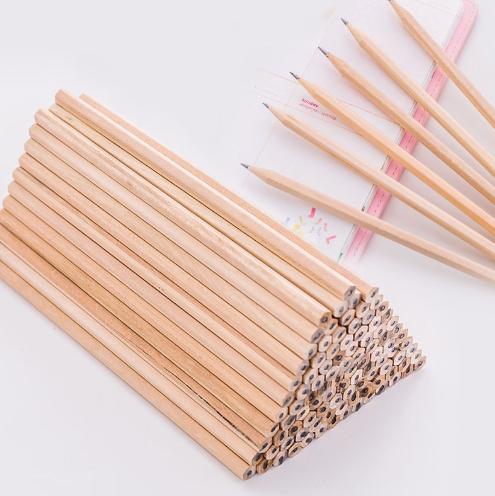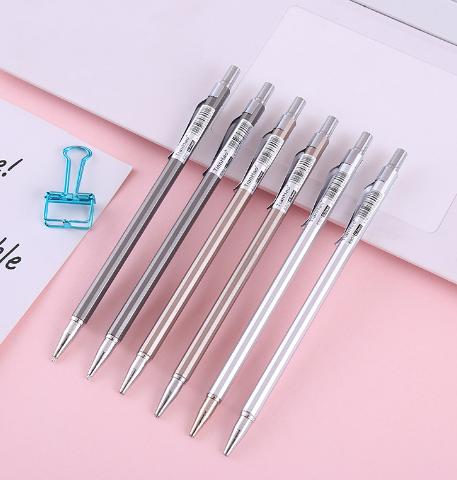Mastering Pencil Lead: A Comprehensive Guide to Graphite Hardness and Grades
In the realm of writing and sketching, the humble pencil stands as a timeless tool, driven by the nuanced qualities of its lead. Join us as we embark on a journey through the intricate world of pencil lead, exploring its diverse hardness levels and grades, and unlocking the secrets to choosing the perfect pencil for every task.
What is Pencil Lead?
At the heart of every pencil lies its lead, a composition of graphite and clay that determines its performance. Contrary to its name, pencil lead contains no actual lead, instead relying on graphite—a form of carbon renowned for its ability to leave marks on paper.
Graphite, when mixed with clay in varying proportions, creates leads of different hardness levels. The ratio of graphite to clay dictates the darkness, smoothness, and erasability of the marks produced by the pencil.
Understanding this fundamental composition is essential for delving into the world of pencil lead and harnessing its full potential.
Soft and Hard Pencil Lead
Understanding the softness and hardness of pencil lead is crucial for achieving desired results in writing and drawing.
Soft leads, denoted by the 'B' grades, offer dark and smooth lines ideal for artistic sketching and shading. These leads contain higher proportions of graphite, resulting in softer and darker marks on paper.
Hard leads, designated by 'H' grades, produce light and precise lines suitable for technical drawings and intricate details. These leads have higher clay content, making them harder and lighter in tone.
Understanding the Graphite Grading Scale
The balance between hardness and softness is achieved through a range of grades, from the softest '9B' to the hardest '9H,' each offering distinct characteristics for various applications.
The graphite grading scale typically ranges from 9H to 9B, with each letter and number combination representing a different level of hardness or darkness:
H Series: These pencils are on the harder side of the scale and produce lighter marks. They are suitable for precise, fine lines and detailed work. The "H" stands for hardness, and the higher the number (e.g., 9H), the harder and lighter the pencil.
9H, 8H, 7H, 6H, 5H, 4H, 3H, 2H, H
F and HB: These pencils sit in the middle of the scale. The "F" stands for fine point, and it's often used for drafting and drawing fine lines. The "HB" stands for hard-black, and it's considered the middle point between hard and soft, suitable for general writing and drawing.
B Series: These pencils are on the softer side and produce darker marks. They are suitable for shading, sketching, and creating bold lines. The "B" stands for blackness, and the higher the number (e.g., 9B), the softer and darker the pencil.
B, 2B, 3B, 4B, 5B, 6B, 7B, 8B, 9B
When selecting a pencil, consider the type of work you'll be doing. For detailed technical drawings, choose a harder pencil (e.g., 2H to 6H). For shading and sketching, opt for a softer pencil (e.g., 2B to 6B).
HB and F pencils are versatile and suitable for general-purpose use. Experimenting with different grades will help you find the right balance between precision and expression for your projects.
Popular Pencils and Their Lead Types
Wooden Pencils: An Enduring Classic
For many of us, the No. 2 pencil was a staple during our school days, yet we often overlooked the extensive range of pencil leads available.
Traditional wood-cased pencils offer a diverse array of hardness and darkness, catering to various artistic and professional requirements.
Here's a concise overview of the common grades in wooden pencils, arranged from light to dark:
- No. 1 (B): Featuring soft lead, perfect for bold, expressive lines.
- No. 2 (HB): The versatile middle ground, ideal for general writing and light sketching.
- No. 2.5 (HB/H): Slightly firmer, suitable for precise lines and neat handwriting.
- No. 3 (H): Harder lead, excellent for technical drawings demanding accuracy.
- No. 4 (2H): The firmest in this spectrum, suitable for intricate detailing and subtle shading.
Each grade fulfills a specific purpose, from taking standardized tests with a No. 2 pencil to creating intricate artwork with a No. 4.

Metal Mechanical Pencil: Embracing Efficiency
In recent decades, mechanical pencils have emerged as a convenient alternative to traditional wooden pencils, owing to their consistent sharpness and refillable nature.
The Evolution of Mechanical Pencils
Originating in the 1800s, mechanical pencils underwent significant development before becoming a ubiquitous item in stores worldwide.
Modern iterations feature a variety of styles, ranging from ergonomic grips to sleek, pen-like designs, catering to a broad audience of students, professionals, and artists.
In the realm of personalized writing tools, custom pens also hold significant value. Like pencils, they serve not only as writing instruments but also as potent mediums for brand promotion and personalization.
Whether distributed at events or included in customer shipments, custom pens ensure your message remains visible, reinforcing brand recognition with every use.
The Practicality of Refills
Mechanical pencils offer a range of lead grades, from soft (2B, 4B, 6B) to hard (2H, 4H, 6H), each tailored to specific tasks.
However, their true convenience lies in their refillable function, allowing users to retract or extend the lead, thereby reducing waste and breakage.
Available lead sizes for mechanical pencils include:
- 0.2 mm
- 0.3 mm
- 0.4 mm
- 0.5 mm
- 0.7 mm
- 0.9 mm
- 1.0 mm
- 1.3 mm
- 2.0 mm
Whether you favor the classic charm of wooden pencils or the efficiency of mechanical ones, there's a perfect tool to suit your needs and enhance your creative endeavors.

Conclusion
As we conclude our exploration of pencil lead, we invite you to delve deeper into this fascinating realm. Armed with knowledge of graphite hardness and grades, you'll embark on a journey of creativity and precision, wielding your pencil with newfound confidence and skill.
Let pencil lead be your guide as you navigate the boundless possibilities of written and visual expression.


